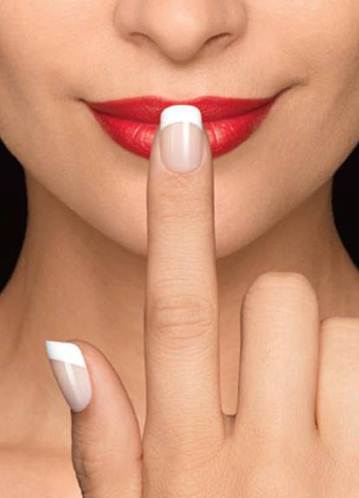Marcia Desanctis
The Tool: Inner authority
The Goal: To believe in yourself
“The fear of rejection is a potent little poison. The dread
of being laughed at stifles us all”
Being a freelance writer, especially a mid-life,
second-career one, sometimes takes more confidence than I can conjure up.
Ninety percent of the time, my ideas are rejected or ignored and, some
mornings, I’d rather burrow under the duvet than face the doors that routinely
slam in my face.

The Tool: Inner authority. The Goal: To believe in
yourself
The fear of rejection is a potent little poison. Whether
asking your boss for a raise or inviting someone out on a date, the dread of
being laughed at can stifle us all. I’m often rendered voiceless by such doubt
and dread. What I need – at work and in life – is a confidence boost.
So I welcomed the Inner Authority tool, designed to tackle
this fear. At first, I was unsure about engaging the services of what the
authors call ‘The Shadow’ – an image on which you project your insecure
feelings “until they form a being you could see”. It sounds silly. An imaginary
friend? At my age? But far from it – it’s actually meant to be the embodiment
of all the shyness, awkwardness, trepidation and disappointments that have
thwarted me and stifled my voice. I confess, this exercise was bittersweet as I
felt great tenderness for the image that unfolded. It was me aged 10 with long,
skinny legs and huge feet, frequently teased, fearing I’d be ignored. It’s me,
tripped down to the barest core. The purpose is for this dynamic duo – The
Shadow (consisting of all the things I fear and loathe in myself) and me – to
join forces so no longer choke on unsaid words and emotions.

The fear of
rejection is a potent little poison.
At dinner that weekend, I was seated next to a famous
novelist and felt tongue-tied by my sense of inferiority. So I called upon the
tool.
“So what do you do?” the famous author asks me. Enter The
Shadow.
Hello old friend, think, as I conjure up the pre-teen
me. Do not apologise, it screams back. Not for anything. I
sit up, head held high.
“I’m a writer,” I say. Yes you are, The Shadow says.
He and I chatted throughout the evening. It may seem preposterous, but I felt
like this so-called Shadow had argued me to speak unimpeded. It turned out, the
author had read two of my articles, but that was beside the point. An
interaction with a person more successful shouldn’t be a judgement on my own
self-worth.
So I’m resolved to end my eternal tentativeness. So what if
someone rejects one of my ideas? I need a mental reminder: they’re not
rejecting me. You have nothing to lose, that striving little Shadow will say.
Next time your confidence wavers, find that Shadow and go for it.
Anna Hart
The Tool: Jeopardy
The Goal: To build willpower
I’ve always been helpless in the face of temptation. I’m
self-employed and aware that any procrastination has a direct impact on my
career. I have a long list of ideas and half-baked project, yet weeks can pass
without a hint of progress. Instant gratification is the bane of my life.
In truth, the only thing between me and another ten stone of
weight, liver failure and unemployment are the barriers I’ve had to construct
in my daily routine. In the absence of self-control, my strategy is to push
temptation out of reach. I don’t have biscuits in the house, because I know I
can demolish an entire packet in one sitting. I know how easily one glass of
wine turns into four, so if I want to be hangover-free, I don’t go to the pub.

The Tool:
Jeopardy. The Goal: To build willpower
But this tactic is as watertight as a pair of fishnet
stockings. One weekend away with friends and my rational lifestyle is thrown
off course; I then scold myself for my weak will. Building unstoppable
willpower is fifth and final issue covered in The Tools. The suggestion
is that capturing a ‘sense of urgency’ is the most effective way to forgo
immediate gratification. Each tool involves heavy-duty visualisation and
Jeopardy seems the scariest. It instructs me to gaze into my future and see
myself on my deathbed. This older self knows how crucial the present moment is,
as I’ve run out of them. She’ll rise from her bed and scream at me not to waste
time. Apparently, using the tool when I’m struggling to concentrate will help
me live a life where I ‘resist superficial distractions’; I’ll be able to meet
a friend for just one cocktail, because I know the next morning counts.
So, I muster up the image of my dying self. She has
transparent skin, hollow eyes, a shrill voice – basically Miss Havisham from Great
Expectations. But having watched too many Japanese horror movies, my
imagination is too vivid for this. The mental image of my corpse-like self
screeching at me is terrifying. So I go back to the drawing board and make my
older self a few years younger and a smidgen smilier; I use Maggie Smith as a
rough template. I conjure up Maggie – sorry, my older self – on a cold, drizzly
Monday at 6.30am, when I don’t feel like going for my morning run. “You won’t
remember all the lie-ins you had when you’re my age,” she say. “You will
be glad you looked after yourself.” And I get out of bed. I apply the tool
again when tempted to take a break from work one afternoon to catch up on Homeland.
“Don’t be daft,” says the older Mrs Hart. “Finish that article and cook a
Jamie Oliver recipe tonight with your lovely husband. He won’t be around
forever.” I obediently re-open my laptop; it seems I cannot refuse my older
self anything.
Of course, I’m not transformed overnight. There are times
when I refuse to consider what Mrs Hart The Elder would say. The authors warn
that using the tools takes practice, so I’m not too despondent and, so
far, I’m impressed with the results. I’ve been getting up earlier and I am more
focused. The most surprising result is that I’ve been much better at staying in
touch with my parents and sister – taking the time to send them a text, email
or card. Nothing re-shuffles your priorities quite like picturing yourself
nearing the end of your life.